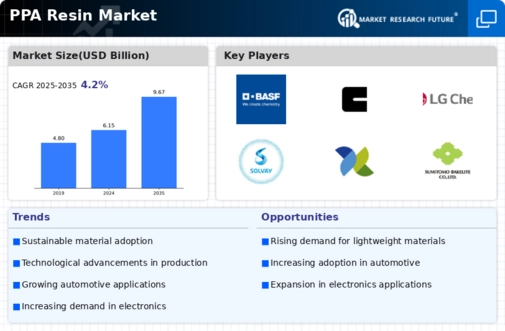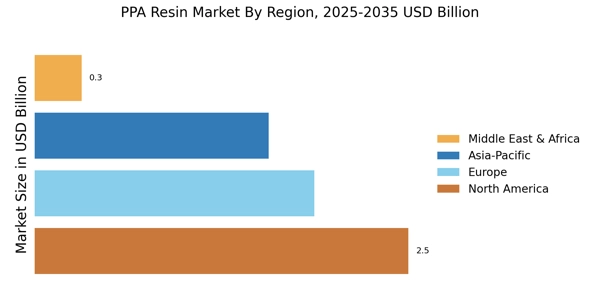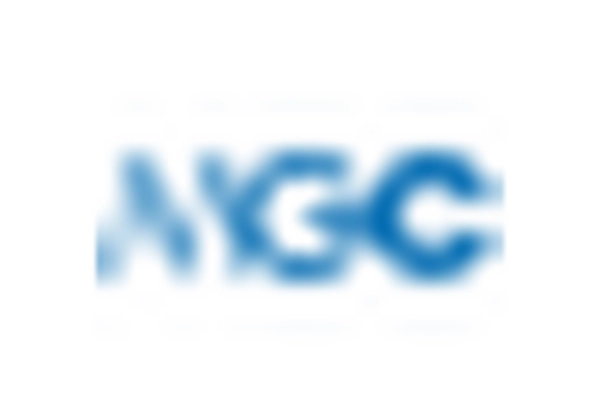Rising Demand in Automotive Sector
The automotive sector is experiencing a notable surge in demand for PPA resin, primarily due to its lightweight and high-performance characteristics. As manufacturers strive to enhance fuel efficiency and reduce emissions, the PPA Resin Market is positioned to benefit significantly. In 2025, the automotive industry is projected to account for approximately 30% of the total PPA resin consumption. This trend is driven by the increasing adoption of electric vehicles and stringent regulations aimed at reducing carbon footprints. Consequently, the PPA Resin Market is likely to witness robust growth as automotive manufacturers seek materials that offer both durability and weight reduction.
Expansion of Renewable Energy Sector
The renewable energy sector is emerging as a significant driver for the PPA Resin Market. With the increasing focus on sustainable energy solutions, PPA resin is being utilized in various applications, including wind turbine components and solar panel manufacturing. The market for renewable energy is anticipated to grow at a rate of approximately 7% annually, creating a substantial opportunity for PPA resin producers. This growth is likely to be fueled by government initiatives promoting clean energy technologies and the need for materials that can withstand harsh environmental conditions. As a result, the PPA Resin Market is poised for expansion in alignment with the renewable energy sector's growth.
Increasing Focus on Lightweight Materials
The increasing focus on lightweight materials across multiple industries is driving the demand for PPA resin. Industries such as aerospace, automotive, and consumer goods are prioritizing materials that contribute to weight reduction without compromising performance. The PPA Resin Market is projected to grow as companies seek to enhance product efficiency and sustainability. In 2025, the market is expected to witness a growth rate of approximately 5%, driven by the need for lightweight solutions that improve fuel efficiency and reduce emissions. This trend indicates a broader shift towards innovative materials that align with environmental goals, further solidifying the role of PPA resin in various applications.
Advancements in Manufacturing Technologies
Advancements in manufacturing technologies are playing a crucial role in shaping the PPA Resin Market. Innovations such as 3D printing and injection molding are enabling the production of complex geometries and customized solutions, which are increasingly in demand across various industries. The PPA Resin Market is likely to benefit from these technological advancements, as they allow for more efficient production processes and reduced material waste. As manufacturers seek to optimize their operations and enhance product performance, the adoption of PPA resin is expected to rise, potentially leading to a market growth rate of around 6% by 2025.
Growth in Electronics and Electrical Applications
The electronics and electrical applications are increasingly adopting PPA resin due to its excellent thermal stability and electrical insulation properties. The PPA Resin Market is expected to see a substantial increase in demand from this sector, which is projected to grow at a compound annual growth rate of around 5% through 2025. This growth is attributed to the rising need for high-performance materials in consumer electronics, telecommunications, and industrial equipment. As the trend towards miniaturization and efficiency continues, the PPA Resin Market is likely to expand, providing manufacturers with innovative solutions that meet stringent performance criteria.


















Leave a Comment